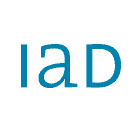Various practice-oriented methods and procedures are used to evaluate the stress on employees at their workplaces and to derive suitable design measures from this. Often screening methods such as AAWSlight or EAWS are used. Alternatively, specific measurements of whole-body movements and/or whole-body forces in concrete application situations can be carried out, for example.
Our research group is working on further developing, digitising and validating these screening methods, adapting them to company- and context-specific requirements and integrating the assessment of mental stress into these methods.
Reference Projects
The aim of the joint research project was to develop a comprehensive inventory of methods for carrying out occupational risk assessment for physical stress.
In cooperation with Robert Bosch GmbH, the IAD is developing a computer-aided method inventory that enables ergonomic assessments of physical stress.
Diseases of the musculoskeletal system (MSE) represent a significant health problem. In addition to back pain, there has been an increase in conditions affecting the upper extremities (hand-arm-shoulder system). These can be triggered by activities involving high whole-body and finger-hand forces. A practical guide for the classic assessment approach for action forces, a user training-seminar for classical approach and an additional screening approach for “activities / tasks with high action forces” (including brief instructions for testing) are to be drawn up in the project. These are based on results of the project "Montagespezifischer Kraftatlas” /The assembly-specific force atlas/ (Wakula et al. 2009 /BGIA-Report 3/2009; https://publikationen.dguv.de/forschung/ifa/ifa-report/1913/der-montagespezifische-kraftatlas-bgia-report-3/2009 ).
U-line assembly systems are workstations which are arranged in the form of a U according to the one-piece flow concept. These are hybrid systems in which automated processes are supplemented by manual activities. Depending on the job situation, one or more employees are flexibly deployed in U-lines. Intensive manual work in U-lines can lead to musculoskeletal disorders of the upper extremities and shoulder belt. This depends essentially on the work design. In U-lines, these include short movement cycles with highly dynamic and fine-motor finger-hand and arm movements, for example. U-lines can also cause increased strain on the lower extremities. Due to the circularity of the working persons in U-line assembly systems, lateral steps and rotational movements in the lower back area can occur, representing a significantly different stress pattern compared to “conventional" walking.











